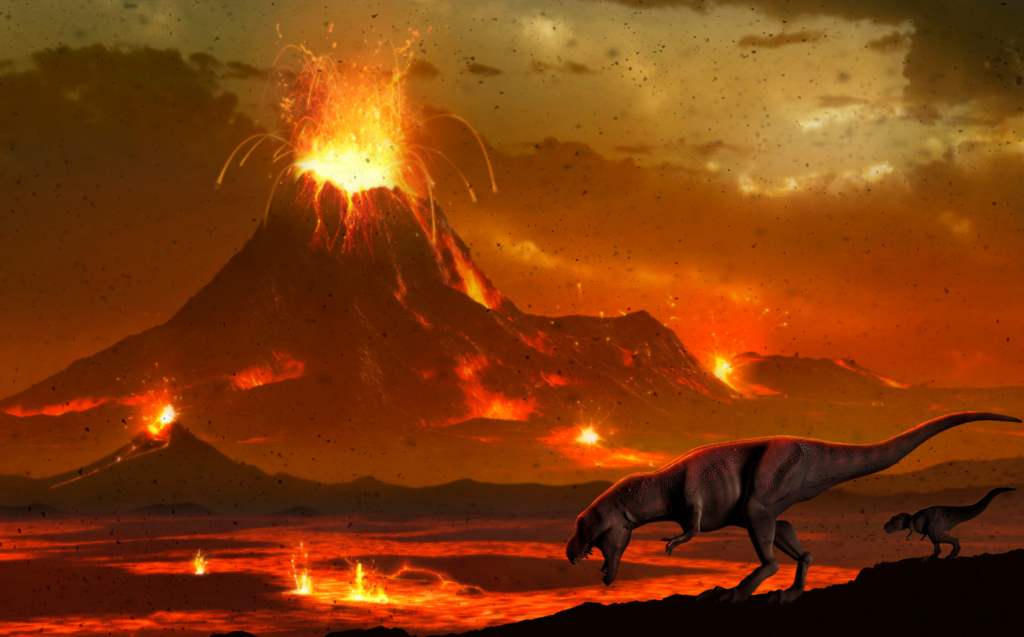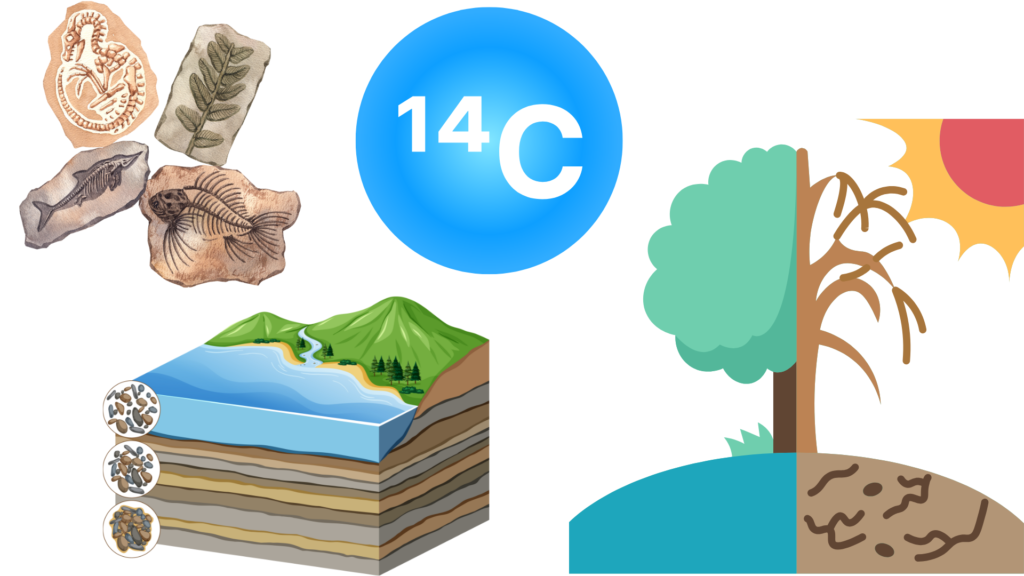Mass extinctions are the dramatic punctuation marks in the history of life on Earth, moments when vast numbers of species disappear in geologically short periods of time. To a geologist, these are not just tragic biological events; they are powerful geological signals etched into the layers of rock, revealing the story of Earth’s resilience, chaos, and transformation.
While the term may sound like a plot from a science fiction movie, mass extinctions are real, scientifically documented phenomena, and they’ve occurred at least five times in Earth’s past. In this article, we’ll take a humanized journey through the science behind these events, what causes them, how we study them, and what they mean for our planet’s future.
What Is a Mass Extinction?
A mass extinction is defined as a period in Earth’s history when a large number of species die out globally in a relatively short geological time span, usually less than a few million years. While extinction is a normal part of evolution, mass extinctions involve a sudden, global-scale loss of biodiversity and significantly alter ecosystems.

To qualify as a mass extinction, the event must meet criteria such as:
- Extinction of at least 75% of species
- Geologically rapid timeframe
- Global impact
Geologists and paleontologists detect these events through the fossil record, noting the sudden disappearance of life forms in sedimentary rock layers, often accompanied by chemical or isotopic anomalies.
The Big Five: Major Mass Extinction Events
Earth’s history has seen five major mass extinctions, each reshaping the biological and geological landscape in its own way:
End-Ordovician Extinction:
The End-Ordovician Extinction, which occurred about 444 million years ago, was the first major mass extinction event in Earth’s history and the second-largest in terms of species loss. It took place at the end of the Ordovician Period and is believed to have wiped out approximately 85% of marine species.
This extinction is primarily linked to a global cooling event. A significant drop in atmospheric CO₂ levels likely triggered a major ice age, leading to glaciation and a dramatic fall in sea levels. As a result, shallow marine habitats—where most life existed at the time—were destroyed or severely altered. After the glacial period, rapid global warming and sea-level rise followed, further stressing surviving species.
Groups most affected included brachiopods, bryozoans, trilobites, graptolites, and many types of conodonts. Despite its severity, the End-Ordovician extinction paved the way for evolutionary innovations during the Silurian Period, as ecosystems slowly recovered.
Late Devonian Extinction:
The Late Devonian Extinction, occurring around 375 to 360 million years ago, was one of the five major mass extinctions in Earth’s history. Unlike a single catastrophic event, it is considered a prolonged crisis that unfolded over several million years during the Devonian Period, which is often called the “Age of Fishes” due to the great diversity of marine life at the time.
This extinction primarily affected marine environments, especially reef-building organisms like stromatoporoids and corals, as well as various species of jawless and early jawed fishes. It is estimated that around 70–80% of marine species went extinct. While the exact causes are still debated, several contributing factors have been proposed. These include widespread anoxic (oxygen-depleted) conditions in the oceans, possibly triggered by volcanic activity, nutrient runoff from land, and the expansion of terrestrial plants, which may have increased soil erosion and altered global carbon cycles.
Another theory suggests that global cooling, possibly following a period of greenhouse conditions, led to disruptions in marine ecosystems. The collapse of Devonian reef systems marked a major ecological shift and significantly delayed the recovery of marine biodiversity. Overall, the Late Devonian Extinction reshaped marine life and paved the way for new evolutionary paths in the Carboniferous Period.
End-Permian Extinction:
The End-Permian Extinction, also known as the “Great Dying,” occurred about 252 million years ago and is recognized as the most severe mass extinction event in Earth’s history. It marked the boundary between the Permian and Triassic periods and resulted in the loss of an estimated 90–96% of marine species and about 70% of terrestrial vertebrate species.
The causes of this catastrophic event are believed to be complex and multifaceted. One of the leading theories points to massive volcanic eruptions in what is now Siberia (the Siberian Traps), which released enormous quantities of carbon dioxide, methane, and sulfur compounds into the atmosphere. This led to rapid global warming, ocean acidification, and severe anoxia (lack of oxygen in the oceans), creating hostile conditions for marine life.
On land, ecosystems collapsed due to extreme climatic fluctuations, habitat loss, and possibly toxic atmospheric gases. The breakdown of plant life further disrupted food chains and oxygen production. The recovery from the End-Permian extinction was slow, taking millions of years, and it profoundly altered the course of evolution, eventually leading to the dominance of dinosaurs in the Mesozoic Era. This extinction event serves as a stark example of how rapidly Earth’s biosphere can be destabilized by environmental change.
End-Triassic Extinction:
The End-Triassic Extinction, which occurred around 201 million years ago, was a significant mass extinction event that marked the transition from the Triassic to the Jurassic Period. It led to the disappearance of approximately 76% of all marine and terrestrial species, profoundly reshaping life on Earth and paving the way for the rise and dominance of dinosaurs in the Jurassic.
The most widely accepted cause of this extinction is massive volcanic activity associated with the breakup of the supercontinent Pangaea, particularly the eruptions that formed the Central Atlantic Magmatic Province (CAMP). These eruptions released vast amounts of carbon dioxide (CO₂) and other greenhouse gases into the atmosphere, triggering rapid global warming, ocean acidification, and oxygen depletion in marine environments.
Marine groups such as ammonoids, reef-building corals, and many brachiopods were severely affected. On land, several groups of early reptiles and large amphibians went extinct, clearing ecological space for dinosaurs to diversify and dominate in the Jurassic. The End-Triassic Extinction, like other mass extinctions, was a turning point in Earth’s evolutionary history, driven by both climate change and geologic upheaval.
End-Cretaceous Extinction:
The End-Cretaceous Extinction, which occurred about 66 million years ago, is one of the most well-known mass extinction events, primarily because it marked the end of the dinosaurs (except for their descendants, the birds) and cleared the way for the rise of mammals. This event marks the boundary between the Cretaceous and Paleogene periods (formerly known as the K–T boundary).
The most widely accepted cause of this extinction is the impact of a large asteroid or comet, which struck the Earth near present-day Chicxulub in the Yucatán Peninsula, Mexico. The impact released energy equivalent to billions of nuclear bombs, creating a massive crater and triggering wildfires, tsunamis, and a “nuclear winter” effect. This resulted in drastic climate change, blocking sunlight and collapsing food chains.
In addition to the impact, volcanic activity in the Deccan Traps of India may have contributed to long-term environmental stress through the release of volcanic gases, such as sulfur dioxide and carbon dioxide, exacerbating climate shifts and ocean acidification.
The extinction wiped out approximately 75% of Earth’s species, including not just dinosaurs, but also many marine reptiles, ammonites, plankton, and some plants. This pivotal event reshaped the planet’s ecosystems, leading to the Cenozoic Era—the Age of Mammals—and setting the stage for the evolution of modern life forms.
How Do Geologists Study Mass Extinctions?

Studying events that happened millions of years ago may seem like detective work—and in a way, it is. Geologists use several clues to unravel the mysteries of mass extinction:
Fossil Record
Sudden disappearance of certain fossils across global rock layers is a classic indicator. These “extinction boundaries” are often correlated across continents using index fossils and biostratigraphy.
Geochemical Markers
Changes in carbon isotopes, oxygen isotopes, sulfur isotopes, or sudden spikes in iridium (from asteroids) signal environmental disruptions. For example, a sharp drop in δ13C indicates a collapse in global carbon cycling, often linked to mass extinctions.
Sediment Layers
Ash beds, impact spherules, shocked quartz, and soot layers provide physical evidence of asteroid impacts or massive volcanic eruptions. In the case of the K-Pg boundary, a thin clay layer enriched with iridium marks the asteroid strike.
Paleoclimatic Data
Studying ancient temperatures, ocean chemistry, and sea level changes helps understand the cascading environmental impacts of extinction events.
What Causes Mass Extinctions?
No single cause fits all mass extinctions. However, geologists and paleontologists generally categorize causes into two major groups:
A. Catastrophic Events
- Asteroid or comet impacts (e.g., K-Pg extinction)
- Large igneous province (LIP) eruptions (e.g., Siberian Traps, Deccan Traps)
- Gamma ray bursts (hypothetical)
These events cause rapid climate change, acid rain, wildfires, and atmospheric disturbances.

B. Gradual Earth System Changes
- Plate tectonics and continental drift (causing climate shifts and habitat loss)
- Volcanism leading to long-term global warming
- Anoxic oceans due to nutrient loading
- Methane clathrate release
- Sea level changes

Often, it’s a combination of both sudden and gradual stressors that tip ecosystems past their breaking point.
Are We Living Through a Sixth Mass Extinction?
There is growing scientific consensus that we are currently in the midst of a Sixth Mass Extinction, driven primarily by human activity. Unlike previous natural events, this one is caused by:
- Deforestation and habitat destruction
- Climate change
- Pollution
- Overexploitation of species
- Invasive species introduction
Species are going extinct today at a rate 100 to 1,000 times faster than the natural background rate. Unlike past extinctions that unfolded over millions of years, this one is happening within centuries—or even decades.
Why Do Mass Extinctions Matter to Us Today?
Mass extinctions are more than just ancient tragedies—they’re powerful reminders of how interconnected Earth’s systems are. They show us that environmental stress has limits, and once crossed, the biosphere collapses in unpredictable ways.
From a geological standpoint, these events reset ecosystems and pave the way for new evolutionary pathways. After the dinosaurs vanished, mammals and eventually humans rose. But while nature recovers in the long run, it may take millions of years to rebuild lost biodiversity.
Understanding past extinctions helps us prepare for current and future environmental crises. It encourages us to respect Earth’s limits and adopt sustainable practices to ensure that we don’t become victims of the very systems we disturb.


